|
BULB LOG 36 --- 9th September 2006
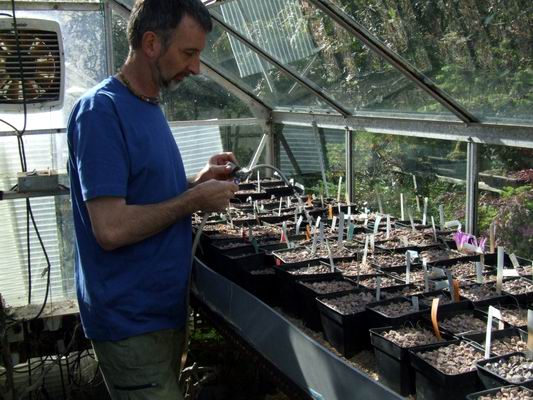
Watering the bulb house
In case it escaped anyone's notice, the 1st of September has come and gone and so has the first storm. As always, I have thoroughly soaked the bulbs in the glasshouses taking great care to ensure that the compost is completely soaked all the way through.
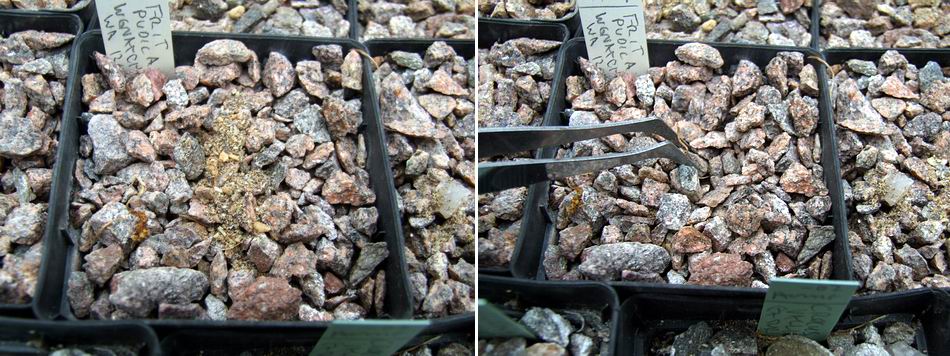
Top dressing with bone meal
Before I watered I added a small sprinkling of bone meal on to the gravel of all the pots that were not repotted this summer - raking over the gravel with a small tool lets the bone meal mix down through the gravel to the top of the compost. I am not sure how effective this method is but I have done it in the past and believe it does add a bit of nitrogen to the old mix to allow the bulbs to root well during the autumn and winter months.
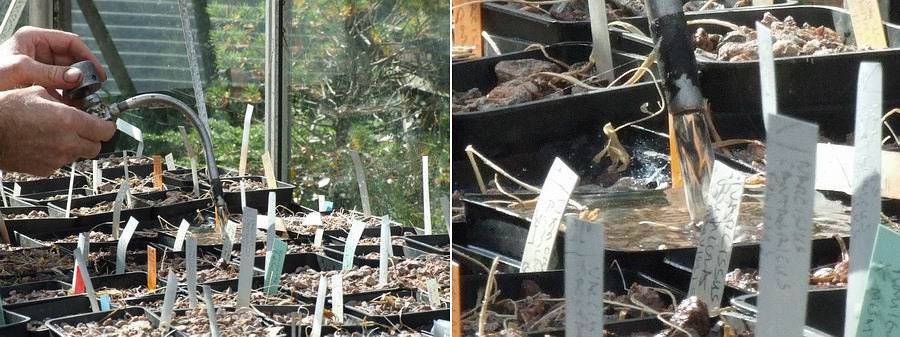
Flooding the pots
I go around the pots flooding them with water at least three times allowing them to sit for while between each soaking to drain and allow the moisture to penetrate all the way through the compost.
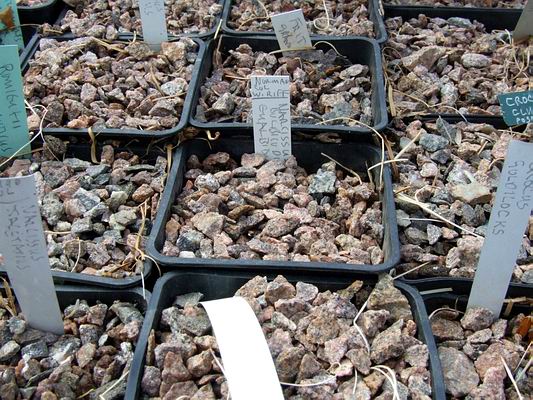
Level the pots
Wherever possible make sure the pots sit level because if they are sloping strongly in one direction the compost on the water drains to the low side and as a result the compost will be wetter at that side. I do this after the first watering when the sand below the pots is wet and beds down better.
It is very noticeable that the water applied to the pots that have been replanted with fresh compost this year takes a lot longer to drain away than it does in the pots that have not been done. The reason for this is that all compost will have a structure and a drainage system just like a landscape in miniature. The newly mixed and refreshed compost despite the fact that it has a lot of grit in it has not yet got a drainage system to allow the water to pass through quickly. By the time it has been well soaked by the application of at least three good soakings drainage pathways will have formed through the mix. The pots that have not been changed this summer drain very quickly as the drainage system established last year is still there despite the compost being dry - they still need several waterings to ensure an evenly moist compost all through the pot.
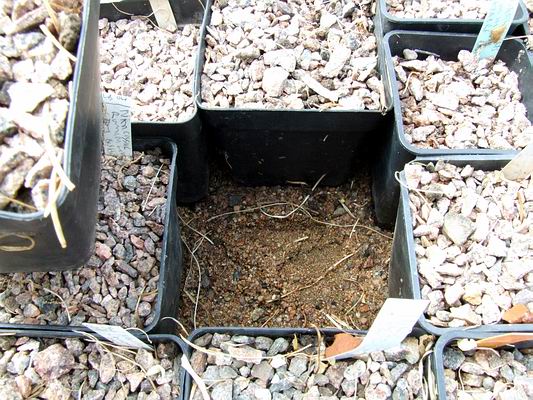
Checking the sand
As the plastic pots fit edge to edge in the plunge and I cannot see the sand I have to be sure that it is also well soaked to provide an effective buffer absorbing the excess moisture when the pots are too wet and acting as a reservoir if they start to dry out. The way I do this is to lift out the odd pot after the waterings to see that the sand is damp. When I replace the pots I give them another soaking as it is also important that there is a good contact between the compost and the sand to allow this exchange of moisture to happen and by lifting the pot up I have broken that bond which will be re-established by another watering. Bedding in well is much more important with plastic pots which can only exchange moisture through the drainage holes at the base while clay pots can absorb through the entire area of their porous body.
Be aware that life is never so simple that one rule or way can be applied to everything and this is the case with my regime of one storm at the start of September and a second at the start of October. This method is a good starting point, like a centre line that will work for 90% of bulbs, but some bulbs need watering in early September and others like a slightly longer dormancy especially when the temperatures remain high.
If you are new to growing bulbs then use the two storm method to start off with and then, by observing and analysing the growth and success of your results in your own local climate, make the adjustments required. You will also learn by experience, mostly gained at the cost of losing bulbs, that some are more particular in their requirements and need exact and individual treatment to be successful while others can adapt to several different regimes and still flower every year without fail.
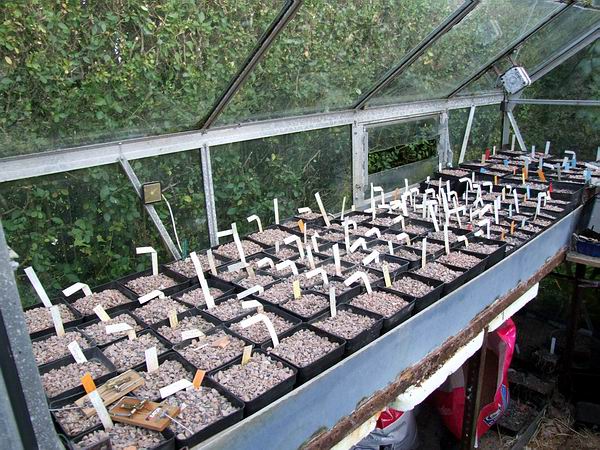
Frit house
I have not watered all the pots in the fritillara house as, in my experience, they do not root until the temperatures start to fall and too much moisture around a still dormant fritillaria bulb can cause rotting. I have however watered all the Chinese frits as they are early rooters, many showed signs of root activity when I repotted them in July. Other pots of fritillarias that are in the bulb house have been watered because they are mixed in with pots of narcissus, crocus, etc - I will water all the remaining frits towards the end of September or sooner if the temperatures drop.
Once this initial soaking has been done the pots will not need to be watered again until I see signs of leaf growth appearing which may be anytime now, or in some cases, not until January or February next year. Having said that it is important that the pots do not dry out completely so I must ensure the sand plunge stays moist at all times. The major difference I have found between growing in clay or plastic pots is the frequency of watering. The clay pots will dry out three times quicker than the plastic ones do, so, having moved over to plastic pots, I am only watering about a third as often as I used to. Another knock-on effect of this is that I have less opportunity to add the supplementary feeding so I have to remember to get it done in good time. I will show all this in the bulb log as the season goes on.
The late summer / early autumn brings the first of the early flowering bulbs into bloom as we head towards the peak flowering of the colchicums and crocuses that we will enjoy in the coming weeks and months.
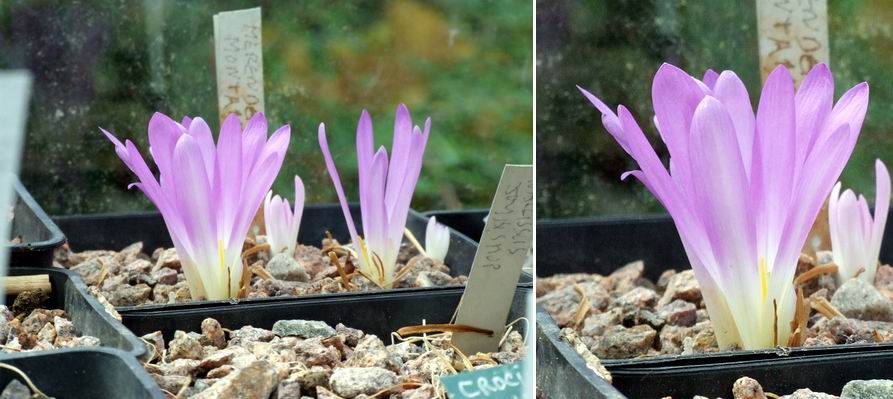
Colchicum montanum
In the Bulb house Colchicum montanum or Merendera montana as we used to know it, is in bloom with its flowers sitting on the gravel surface.
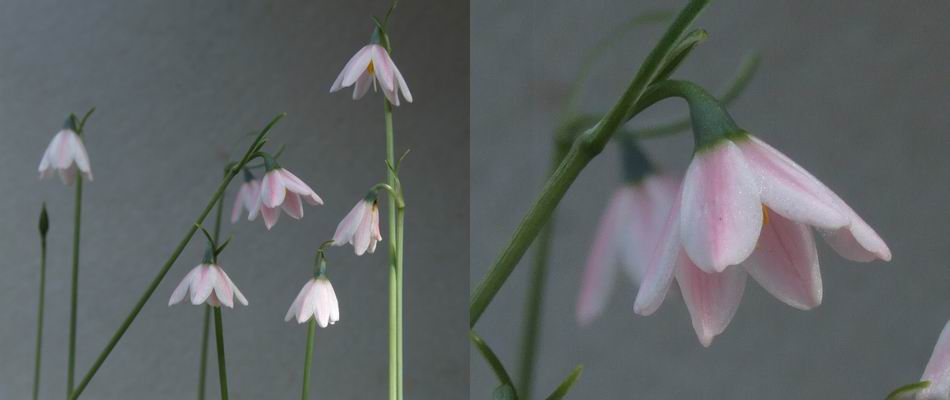
Acis roseum
Another early flowering bulb is Acis roseum which until very recently we would call Leucojum roseum - now some botanist decided it was no longer a leucojum. I am not in any hurry to change all my labels just in case they change their minds again next year.
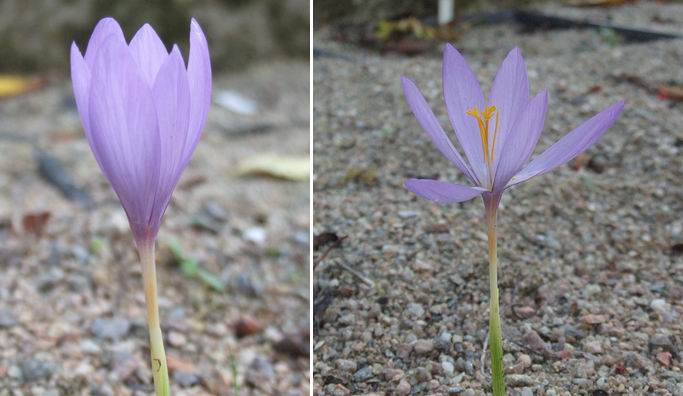
Autumn crocus
One of our earliest autumn crocuses to flower is this one that we got from the late Harold Esslemont many years ago and I am still struggling to get a confirmed name for it. Is it C. nudiflorus; it does produce stolons, or is it a form of C. speciosus? I have had some of the top crocus experts in the world look at it and none would commit themselves to a definitive identification so never feel bad or stupid if you do not know the name of a plant.
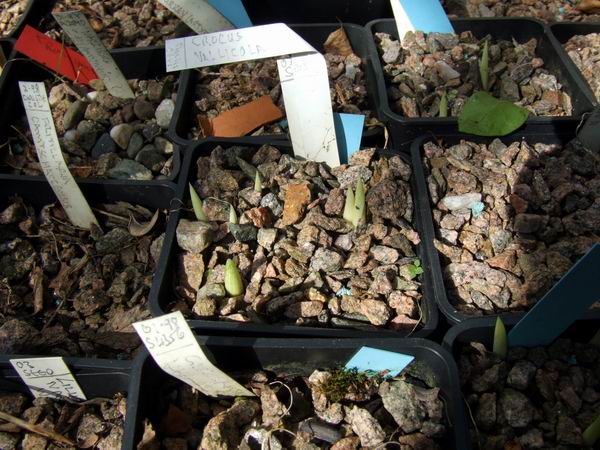
Crocus vallicola 05.09
To illustrate how quickly the autumn bulbs can burst into flower this picture was taken at 14.27 on Tuesday the 5th September, just before heavy rain set in
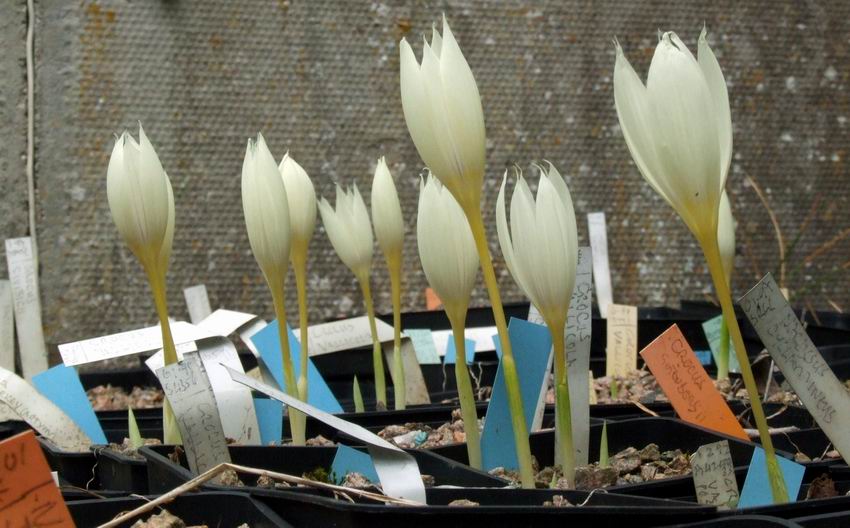
Crocus vallicola 06.09
Today Wednesday the 7th at 13.19 less than twenty four hours later several pots of
Crocus vallicola have fully open flowers.
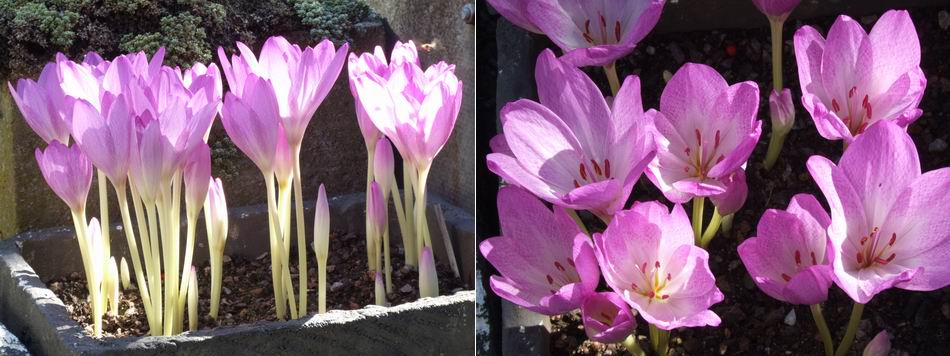
Colchicum hybrid
I will leave you with the Colchicum tessellated hybrid now in full glory and attracting hundreds of hover flies as well as our admiring glances.
^ back to the top ^
|

